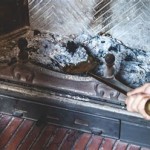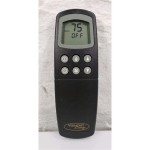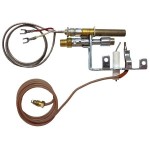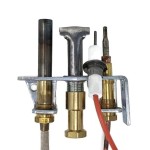Fireplace Insert Blower Parts: A Comprehensive Guide
Fireplace insert blowers are essential components for enhancing the efficiency and heat distribution of your fireplace. They work by circulating warm air from the fireplace into the surrounding room, providing a more comfortable and evenly heated space. While fireplace insert blowers are generally reliable, they can occasionally require repairs or replacement of specific parts. Understanding the different parts of a fireplace insert blower can help you troubleshoot issues and identify the source of any problems.
Fireplace Insert Blower Motor
The motor is the heart of the fireplace insert blower, responsible for powering the fan that circulates the air. It is typically a small, electric motor designed to operate silently and efficiently. If the blower is not working, the motor may be the culprit. Common motor issues include:
- Burnout: Prolonged use or overheating can damage the motor windings.
- Worn Bearings: Worn bearings can cause friction and noise, eventually leading to motor failure.
- Electrical Malfunction: A problem with the wiring or switch can prevent the motor from receiving power.
If you suspect a motor issue, it's best to seek professional assistance for diagnosis and repairs. Replacing the motor is a complex task that requires specialized tools and knowledge.
Fireplace Insert Blower Fan
The fan is responsible for drawing in cool air and pushing it out through the vents, distributing the heat throughout the room. The fan can be made of various materials, but it is often made of metal or plastic.
- Fan Blade Damage: The fan blades can become bent or damaged over time, reducing their efficiency.
- Bearing Failure: The bearings that support the fan can wear out, causing noise and reduced airflow.
- Fan Motor Connection Issues: The connection between the fan and the motor can become loose or damaged, preventing the fan from spinning.
If you notice a decrease in airflow or unusual noises from the blower, the fan might be the problem. You can inspect the fan blades for damage and check the bearings for wear and tear. However, replacing the fan usually requires disassembling the blower, which is best left to a qualified technician.
Fireplace Insert Blower Housing
The housing is the protective casing that encloses the motor, fan, and other internal components. It is typically made of metal or plastic and is designed to withstand high temperatures.
- Cracks or Damage: The housing can become cracked or damaged over time due to heat, vibrations, or accidental impacts.
- Rust or Corrosion: Exposure to moisture and high temperatures can cause rust or corrosion on the housing, affecting its structural integrity.
- Loose Connections: The housing can become loose or dislodged, allowing for air leaks or vibrations.
If you notice any signs of damage to the housing, it's crucial to address them promptly. A damaged housing can compromise the blower's performance and safety. In some cases, replacing the entire blower unit may be necessary.
Fireplace Insert Blower Vents
Vents are the openings in the blower housing that direct the warm air into the room. They are typically made of metal or plastic and can be adjustable to control airflow direction.
- Blockage: Dust, debris, or other objects can accumulate in the vents, restricting airflow.
- Damage: The vents can become cracked or damaged due to heat, impacts, or wear and tear.
- Misalignment: The vents may become misaligned, affecting airflow direction and efficiency.
Regular cleaning of the vents is essential for optimal performance. You can use a vacuum cleaner with a brush attachment to remove dust and debris. If the vents are damaged, they may need to be replaced.
Fireplace Insert Blower Thermostat
Some fireplace insert blowers feature thermostats that regulate the blower's operation based on the room temperature. The thermostat senses the room temperature and turns the blower on or off to maintain a comfortable environment.
- Malfunction: The thermostat can malfunction, causing the blower to run continuously or not at all.
- Calibration Issues: The thermostat may need recalibration if it is not accurately sensing the room temperature.
- Wiring Problems: A loose or damaged wire can prevent the thermostat from communicating with the blower.
If you suspect a thermostat issue, you can try adjusting the settings to see if it resolves the problem. However, if the issue persists, it's best to call a qualified technician for diagnosis and repairs.

Replacement Stove Parts

Replacement Stove Parts

Noisy Gas Fireplace Blower Here S How To Replace It Diy

Napoleon S25i S Series Wood Fireplace Insert With Blower

Direct Vent Gas Fireplace Insert Dri2530ten The Cozy Cabin Lennox Hearth Parts

Napoleon S20i Sch1b3041 Wood Insert With Dual Blower System

Buck Stove Parts

A Guide To Gas Fireplaces All The Parts You Need Know

Metal Chimney Motor Generator Stove Fan Thermoelectric Accessory Set Stable And Firm For Blower Electric Ion Spare Parts

Tips For Finding Parts Your Fireplace Full Guide
Related Posts








